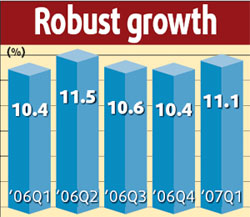| Home / Business / Retail | Tools: Save | Print | E-mail | Most Read | Comment |
| Global Retailers Need to Grasp Market Nuances |
| Adjust font size: |
It's still not too late for global retailers to enter the lucrative Chinese consumer market, but they should first understand the nuances of the market and find the right business models in order to win, say experts. Some early movers such as "I would say it is still not too late for other global retailers to enter the market," said Michael Silverstein, senior partner and managing director of Boston Consulting Group. As the economic boom in Understanding Winning in the scramble for "Finding the right local partner is one of the keys to success," Silverstein said. The urban, coastal and inland markets in Latecomer retailers, Silverstein suggested, may look at the secondary cities first to avoid the fiercely competitive markets in top cities such as Most global retailers understand the differences between Western and Eastern preferences, but there are many nuances that will continue to affect shoppers' choices within Such diversity often calls for customized products and services as well as a different product mix from one city to another, Hsu said. The trick is to find the right balance between uniformity and customization. Too much uniformity will hurt sales productivity whereas too much customization will lead to lower margins. Foreign retailers should also get familiar with the supplier representative model in Retailers act as landlords in this model, renting floor space to suppliers who handle customer interfaces such as merchandising, sales and after-sales services while jointly managing logistics and promotion with retailers. Foreign retailers should also push a business model that combines international and local trade formats, said Patrick Ducasse, senior partner and managing director of Boston Consulting Group and the global leader of BCG's Consumer Practice at its Although modern trade formats such as supermarkets and hypermarkets are gaining ground in "They should make sure that they understand the format, the demographics and find a commercially and economically viable business model," Ducasse said. Network expansion and increasing productivity, Ducasse said, are equally important. Retailers should ask themselves some of the following questions before they set out to meet the challenges they will face in Which format will help us break traditional trades' stronghold in some sectors? Do we know how to balance the benefits of customization against scale advantages in Do we know how to seek opportunities in Do we understand the pros and cons of the supplier representative model for our business? What capacities do we need to answer these questions? (
|
| Tools: Save | Print | E-mail | Most Read |
| Comment |
 |
| Related Stories |
|
